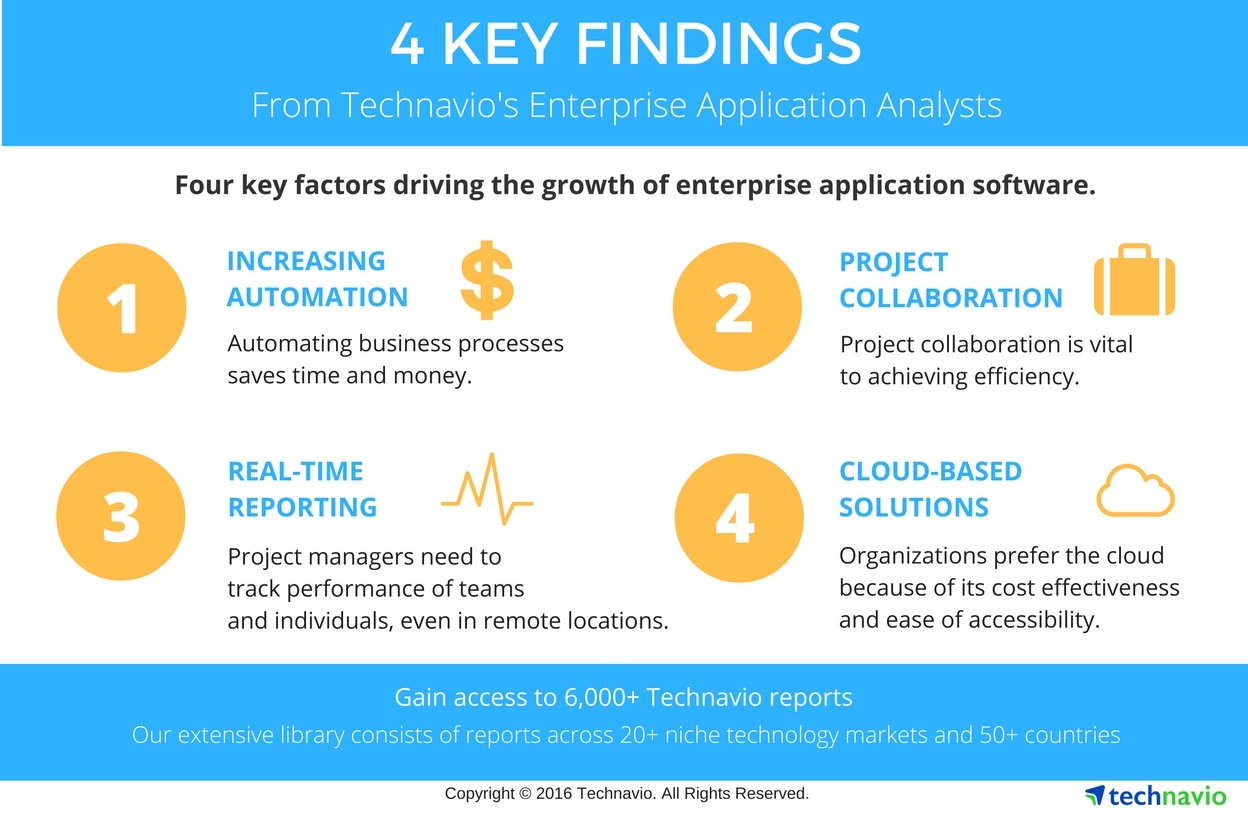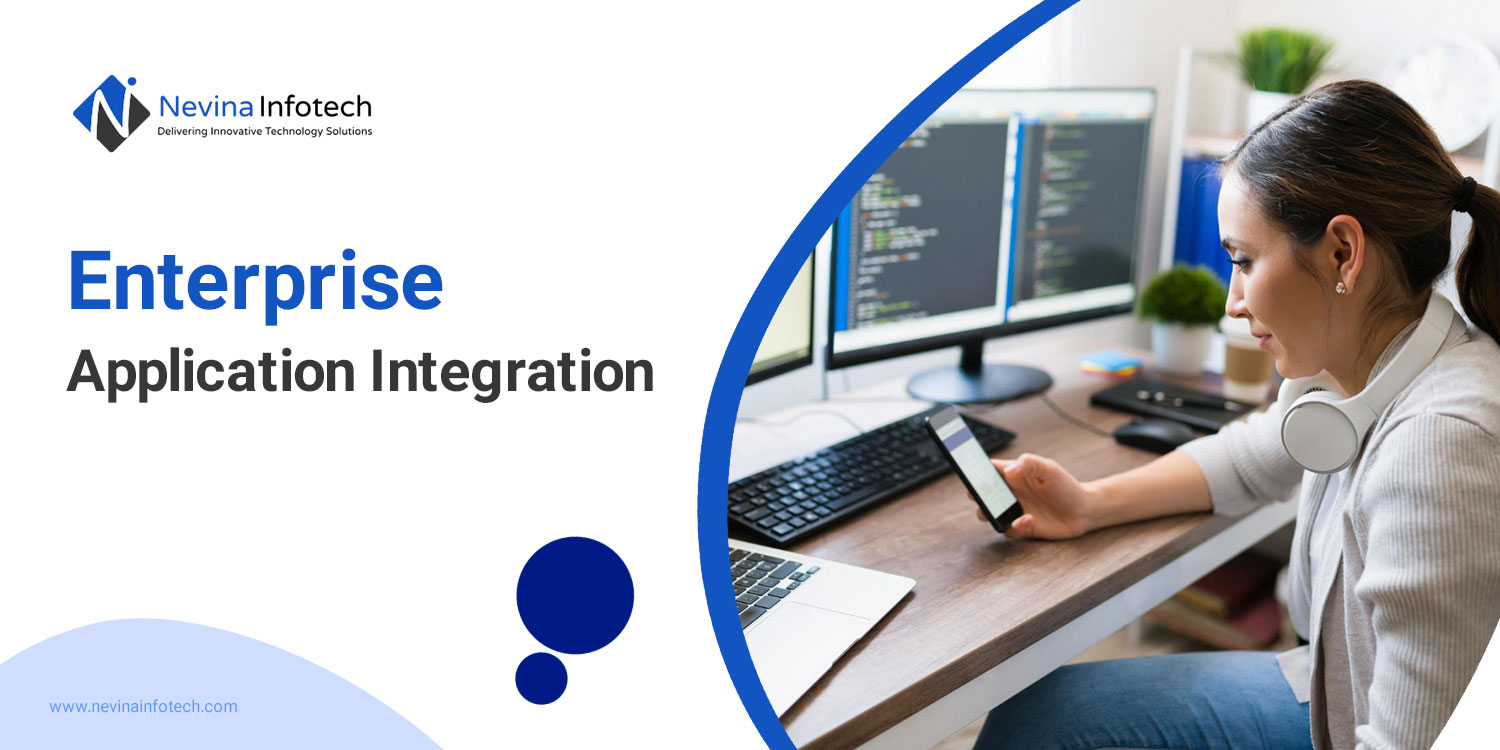Integration of systems and applications is increasingly becoming a crucial topic in modern organizational infrastructure. This reality is demonstrated by the broad array of strategies and viewpoints used to pursue it. It’s simple to dive into the pool of acronyms, viewpoints, and complex marketing terms when you’re just starting your inquiry into application and data integration solutions.
It appears logical that businesses should make use of this data because, in this age of big data, massive amounts of data have transformed into the essential building blocks of many organizations’ information systems. Modern businesses can wish to use information from all of their software infrastructures simultaneously, while always assuring quality and dependability.
Throughout the forecast period, the market for enterprise application integration is anticipated to experience a CAGR of 15.65%. If you are still not taking advantage of EAI, it’s high time you should look around for a custom mobile app development company for your enterprise-grade application.
What is Enterprise Application Integration?
A database framework called Enterprise application integration (EAI) allows many software to link up with one another and, in essence, manages these various exchanges. Enterprise application integration, to put it simply, is the process of transferring data and other formats from one program to another.
By allowing these technologies to communicate with one another through enterprise application integration, the old method of using independent, segregated previous systems is substantially improved. It uses real-time business norms to collect various sets of enterprise applications. These accumulated sets streamline the workflow & maintain controllable infrastructure for coding needs.
In the usage of modern technologies and services, EAI is depicted as a new model. It simplifies the complete process of business administration for all companies of all scales (small, medium, or large). It enables them to incorporate physical systems as well as software programs.
Top Benefits of Enterprise Application Integration
Control and connection of your company
The full network of links, that include software information to employee-related factors, can be handled and regulated when you run a business or hold a higher position. To have total control over your business, use the (EAI) enterprise application integration.
This is because information management is enhanced since it provides a comprehensive view and, through its various methods, enables a full understanding of everything that takes place. You can hire mobile app developers in India for your enterprise application integration.
Streamlines business procedures
EAI solutions excel at streamlining and simplifying all business processes, if there is one area in which they stand out. No matter how complicated the IT architecture is or how many asynchronous apps are there none of these factors matters.
WSO2’s integration process includes the long-term messaging procedures, as well as the interactions between software and applications. They rely on components like middleware for this function.
Enterprise Application Integration reduces costs and investments
The accomplishment of EAI technologies in our businesses results in reduced costs and investments. To justify this, connecting old and new software is the best example as it eliminates the need of deleting the old data, and ends up with reduced investments.
It is now possible to produce new services and goods that can be executed both indoors and outdoors. This will prove cost-effective in the long term. This is the right way to implement this technology in your business, hire iPhone app developers in India to leverage EAI on iOs devices along with Android for the success of your enterprise.
Enables data exchange
Information communication is significantly increased when a company’s various components, as well as its individual IT systems and applications, are connected. The company’s data and software access is available to all workers. Due to the reduction of information duplication, the structure functions better and is significantly more effective.
Saves time and efforts
All corporate information can be gathered together through the integration of several software systems, greatly simplifying the work of every employee. As a result, less time and effort are required to complete activities.
Large-scale tasks, which often take a lot of time to complete, can now be completed more quickly thanks to EAI. As a result, the business operates at its best and eliminates needless duties.
Enhanced advantages and opportunities
The ability to solve problems is increased when EAI technologies are used, and productivity is not only significantly increased but also more productive. It even suggests having an advantage over competitors. Your company can improve its management in areas like marketing, which will ultimately increase its visibility in the business world.
Assimilation to modern processes
The execution of the various business processes includes business scope as well. With EAI, it is much simpler to keep track of them, analyze them, and learn how to manage them. EAI technologies are capable of supporting the business with their analysis and monitoring as they are adaptable to any process.
Types of Technologies of Enterprise Application Integration
The fundamental development tools and goals influence EAI implementation, however, certain general design patterns have arisen which are as follows:
Point-to-point integration
This is the most basic type of EAI. Data is received from one source, sometimes transformed, and then consumed by the following application. Small workflows and a few tools can be implemented easily with them. They are unable to manage large flows and slow down, deceleration of one application will ultimately affect the other side as well.
Hub-and-spoke integration
This type of EAI serves as the central force that links the spokes or applications, therefore, is termed a Hub-and-spoke integration. It is quicker and more well-grounded than Point-to-point integration. In this method, Data is sent to the hub by various technologies when they need to communicate, where it is processed and then delivered. This procedure of transferring information between the applications is facilitated by a central program.
Bus Integration
Bus integration popularly known as enterprise service bus (ESB) is the usual design in which all the applications involved in integration use a series of patterns to transfer and receive pieces of information and flows. This makes integration fast and simple, but planning and picking products must be done.
Middleware integration
Middleware technologies bridge the user interface and operating system. They act as covert interpreters for the system’s applications, facilitating quick data transfers and communication. They are the best choice for combining and synchronizing a sizable data structure across several systems.
Microservices
The current industry standard for enterprise applications that are delivered on the cloud is a microservices architecture. These are compact tools with the single objective of creating a software application as a group of autonomous, self-governed, and detailed services. Integrating connected programs becomes easy and fast with these microservices that can be serverless features or specific apps. Microservices can frequently be dumped as cloud workloads with ease.
Impact of Enterprise Application Integration on Business Performances

- Data synchronization among all the applications results in improved operations and better decision-making. Enterprise application integration enables syncing of data and boosts business performance.
- Modern companies, which depend upon several systems and apps to operate their operations, require interconnectivity among their systems and resources to simplify & smoothen the process of data transfer between the applications or systems.
- By adopting enterprise application integration, businesses can become active and flexible to digest market fluctuations and grab new opportunities.
- These applications aid organizations to provide assurance regarding on-time updates about B2B transactions & data integrations. Furthermore, the upgradation of applications in real-time, synchronization, and features updates as well which ultimately enhance the performance of your enterprise.
- EAI streamlines the business processes automating the workflow and increasing productivity. This entire process of automation of all the apps is held under a controlled gateway chamber that results in no data re-entry, no eros as well as increased visibility.
Bottom lines
In the era of digital transformation, organizations are changing their ways of doing business, enterprise resource planning is becoming quite popular. Organizations of all sizes medium or large require crucial connectivity among all the systems and applications for the ecosystem of the business. For ease in your business administration enterprise application integration solutions help you to connect all your systems and applications through iOs or Android app development.
If you want to scale your business, integrate applications, and step into the digital world of technologies, to ease your way, our enterprise application integration services are at your rescue. Our heightened developers also ensure robust security, trending features, and on-time delivery in a cost-effective range.
On-Demand App Ideas For Startup
FAQs
Why is enterprise application integration necessary?
It is important to use enterprise application integration as it enables a network or a company’s departments & components to transfer information, share data, and correlate resources. It saves time & effort for your workforce and entitles them to do well-organized and systematic operations as well as alliances.
Write some examples of application integration.
Some common examples of application integration that uphold an enterprise to handle various aspects of their businesses to interact and exchange data with other organizations are supply chain management systems, enterprise resource planning such as SAP, customer relationship management such as Salesforce, etc.
Mention the key qualities of EAI.
The essential characteristics of Enterprise Application Integration (EAI) Professionals are:
* Customer Relationship Management Systems.
* Supply Management Applications.
* Payroll and Human Services.
* Enterprise Resource Planning (ERP)
Read Also:-



